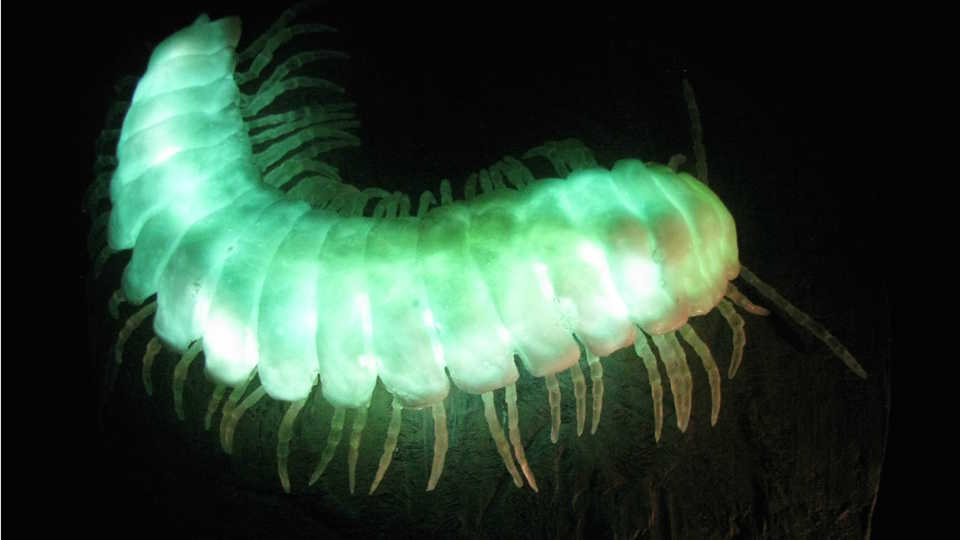Science News
Why do California’s Millipedes Glow?

We may not have fireflies in California, but we do have glowing millipedes. And while fireflies light up to warn predators they taste bad the millipedes warn predators of something a little more severe: poison in the form of cyanide.
In nature these visible warning signals are called aposematism. Some creatures have evolved bright colors letting predators know they are toxic (such as butterflies, frogs, and nudibranchs), others, such as our millipedes, bioluminesce. Like the variety of colors in the natural world, there are also gradations of glow between species. It was this gradation in the California glowing millipedes that caught the eye of researchers Paul Marek and Wendy Moore.
The gradation could be a key to the evolution of bioluminescence in this genus of millipedes. As the scientists note in their recent study, published in the Proceedings of the National Academy of Sciences, Charles Darwin thought this could be true. In On the Origin of Species, he wrote: “Let us look to the great principle of gradation, and see whether Nature does not reveal to us her method of work.” So the scientists went to work, looking in the millipedes genes, to understand the origins and differences among the species and their brightness.
The team focused on millipedes in the genus of Motyxia, plus a rediscovered millipede called Xystocheir bistipita, all of which are found in the mountains of the coastal and Sierra Nevada ranges in California. The rediscovered millipede was originally collected in 1967, and was not known to glow until Marek found it again during fieldwork in the foothills of San Luis Obispo in 2013.
In sequencing the genes of the millipedes, Marek and Moore discovered that Xystocheir bistipita actually belonged in the Motyxia genus and renamed the species Motyxia bistipita. They also discovered two things about the brightness of the millipedes’ glow. The brighter the glow, the larger the cyanide glands and the more toxic the millipede. Also, the brightness had a direct correlation to the range of the millipedes—the higher the elevation the insects were found, the brighter the glow. In higher elevations, the rodents that like to prey upon these millipedes are “ubiquitous,” according to the study.
In addition, the team found that “the faint bioluminescence of the low-lying millipedes represented an older trait and the brighter luminescence of their mountain cousins represented a newer trait,” Marek explains. And that finding led to perhaps the most surprising discovery: the millipedes’ bioluminescence didn’t originally evolve to protect them from predators. According to the study, it “may have initially evolved to cope with metabolic stress triggered by a hot, dry environment and was repurposed as a warning signal by species colonizing high-elevation habitats with greater predation risk.”
“Living things glow in many different colors and for many different reasons, but now we know that the early evolutionary role of bioluminescence may be completely different than its modern day function,” says Marek. “This discovery clarifies the evolutionary origins of many complex traits, not just bioluminescence.”
Next month a new exhibit, Color of Life, opens at the Academy about how organisms in the natural world use color to communicate through tools like bioluminescence. Learn more here.
Image: Glowing millipede by Eden, Janine and Jim via Wikimedia Commons